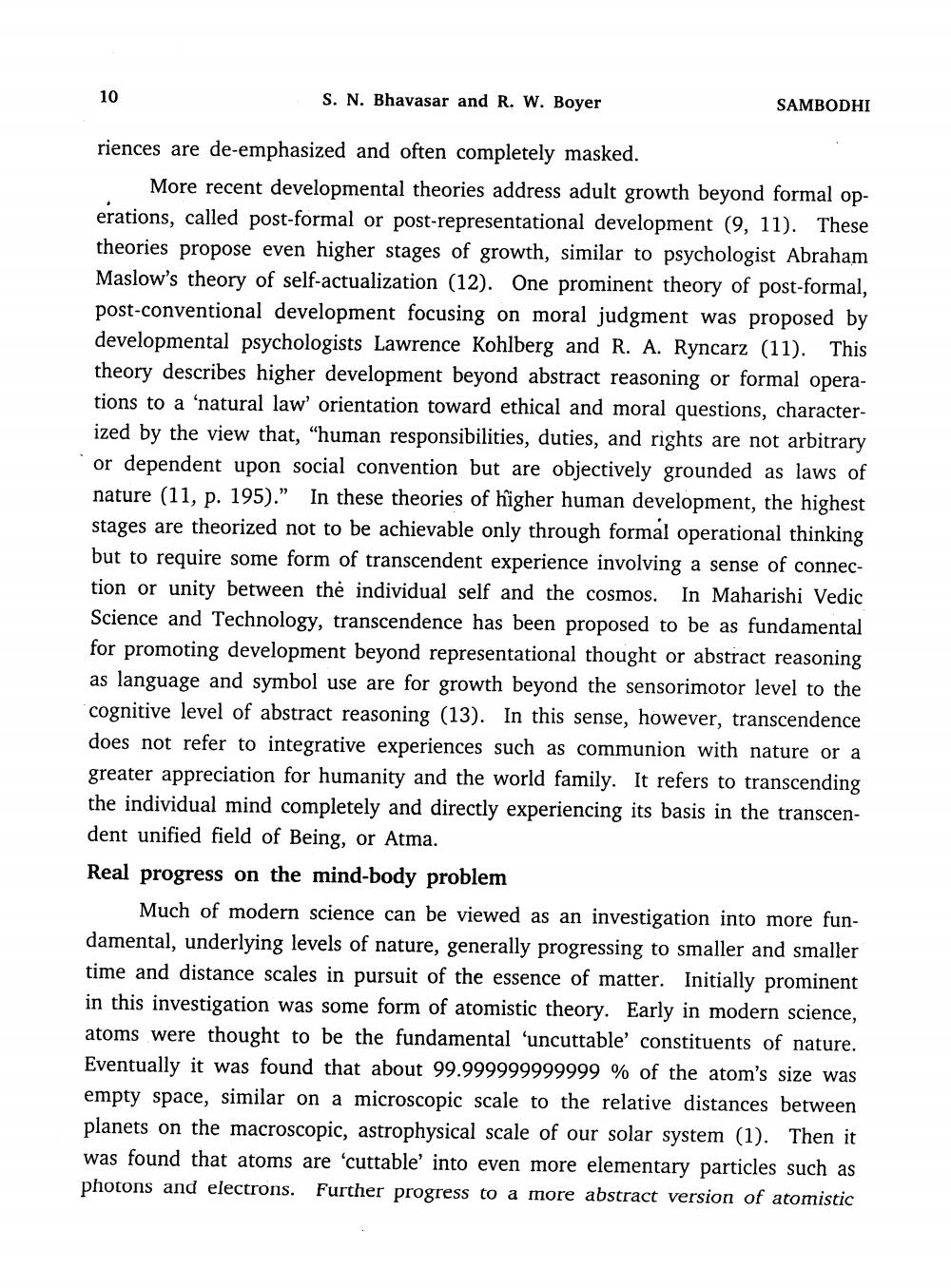________________
S. N. Bhavasar and R. W. Boyer
SAMBODHI
riences are de-emphasized and often completely masked.
More recent developmental theories address adult growth beyond formal operations, called post-formal or post-representational development (9, 11). These theories propose even higher stages of growth, similar to psychologist Abraham Maslow's theory of self-actualization (12). One prominent theory of post-formal, post-conventional development focusing on moral judgment was proposed by developmental psychologists Lawrence Kohlberg and R. A. Ryncarz (11). This theory describes higher development beyond abstract reasoning or formal operations to a 'natural law' orientation toward ethical and moral questions, characterized by the view that, “human responsibilities, duties, and rights are not arbitrary or dependent upon social convention but are objectively grounded as laws of nature (11, p. 195)." In these theories of higher human development, the highest stages are theorized not to be achievable only through formal operational thinking but to require some form of transcendent experience involving a sense of connection or unity between the individual self and the cosmos. In Maharishi Vedic Science and Technology, transcendence has been proposed to be as fundamental for promoting development beyond representational thought or abstract reasoning as language and symbol use are for growth beyond the sensorimotor level to the cognitive level of abstract reasoning (13). In this sense, however, transcendence does not refer to integrative experiences such as communion with nature or a greater appreciation for humanity and the world family. It refers to transcending the individual mind completely and directly experiencing its basis in the transcendent unified field of Being, or Atma. Real progress on the mind-body problem
Much of modern science can be viewed as an investigation into more fundamental, underlying levels of nature, generally progressing to smaller and smaller time and distance scales in pursuit of the essence of matter. Initially prominent in this investigation was some form of atomistic theory. Early in modern science, atoms were thought to be the fundamental 'uncuttable' constituents of nature. Eventually it was found that about 99.999999999999 % of the atom's size was empty space, similar on a microscopic scale to the relative distances between planets on the macroscopic, astrophysical scale of our solar system (1). Then it was found that atoms are 'cuttable' into even more elementary particles such as photons and electrons. Further progress to a more abstract version of atomistic




